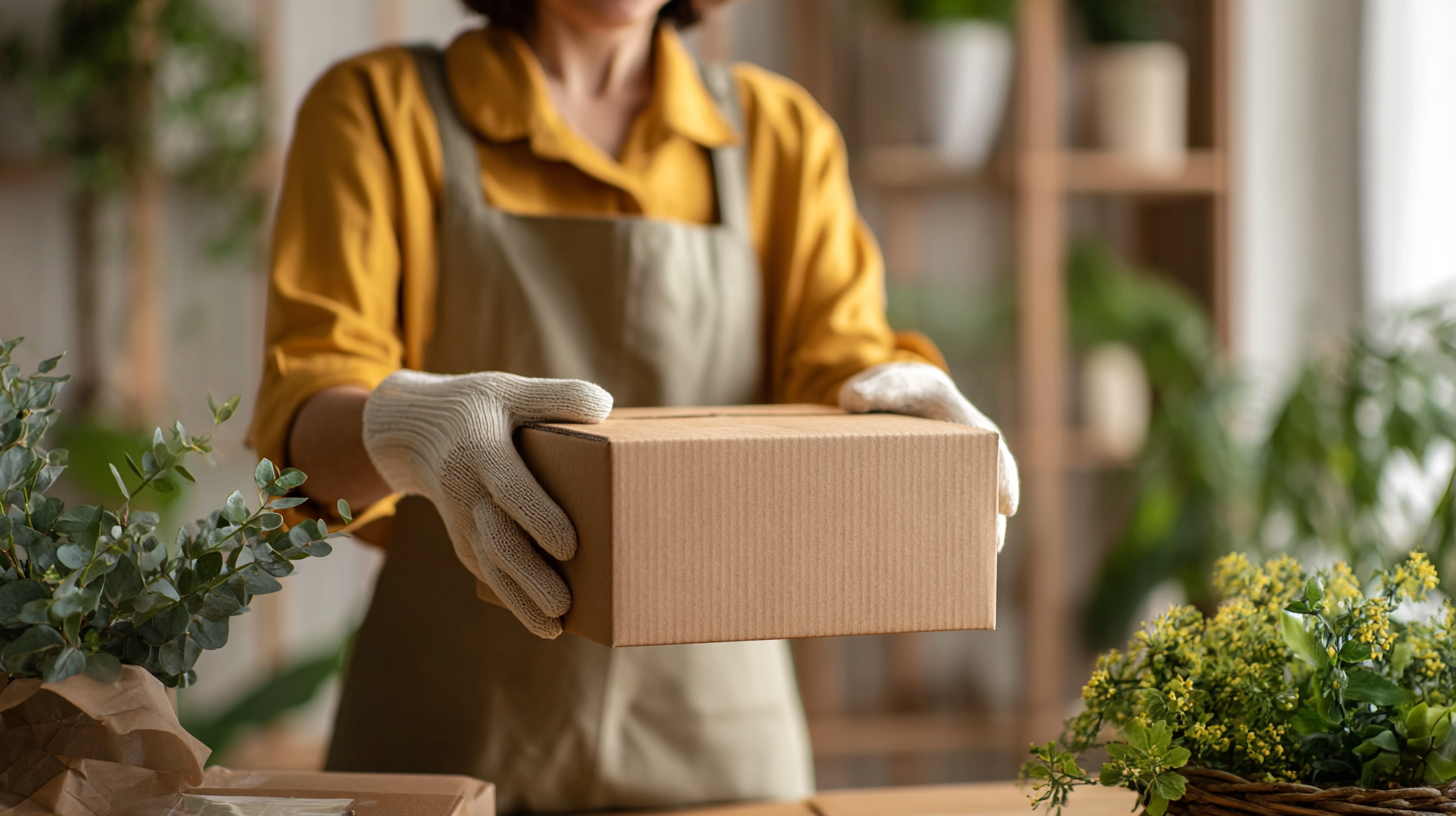Menu
Close
As businesses increasingly recognize the imperative of sustainability, the use of eco friendly shipping boxes has emerged as a pivotal strategy in reducing the carbon footprint associated with logistics. According to a recent report by the International Council on Clean Transportation, shipping accounts for approximately 3% of global greenhouse gas emissions, prompting industries to seek greener alternatives. By transitioning to eco friendly shipping boxes, companies not only reduce waste but also align themselves with the growing consumer demand for environmentally responsible practices.
Industry expert Dr. Emily Carter, a leading researcher in sustainable packaging solutions, emphasizes the significance of this shift: "Utilizing eco friendly shipping boxes is not merely a trend; it represents a conscious decision to protect our planet while maintaining operational efficiency." As more organizations adopt sustainable shipping methods, they contribute to a larger movement towards carbon neutrality and environmental stewardship. By implementing best practices in eco friendly shipping, businesses can enhance their brand image, meet regulatory requirements, and ultimately garner greater consumer loyalty.

When it comes to choosing sustainable materials for shipping boxes, the first step is to opt for recyclable or biodegradable options. Look for boxes made from post-consumer recycled content, which not only minimizes waste but also supports a circular economy. Materials such as corrugated cardboard, paper, and certain bioplastics can significantly lower your carbon footprint while maintaining effectiveness in packaging.
Another essential practice is to consider the materials' sourcing and manufacturing processes. Always check for certifications that indicate eco-friendliness, such as FSC (Forest Stewardship Council) certification, which guarantees that materials are sourced sustainably. By selecting boxes with these credentials, you're promoting better forestry practices and reducing deforestation impacts.
Additionally, consider the size and design of your shipping boxes. Using boxes that are appropriately sized for your products can reduce the amount of material used and lower transportation emissions. Opt for designs that minimize wasted space, as this strategy not only cuts down on materials but also optimizes shipping efficiency, reducing your overall environmental impact.

The environmental impact of traditional packaging choices is increasingly coming under scrutiny as we look for ways to mitigate climate change. According to the Environmental Protection Agency (EPA), packaging waste accounts for approximately 30% of all municipal solid waste in the United States. This significant figure highlights the urgent need for more sustainable alternatives. Conventional materials such as plastics not only contribute to landfill overflow but also take hundreds of years to decompose, leading to long-lasting pollution and harm to wildlife.
Opting for eco-friendly shipping boxes can drastically reduce this adverse impact. For instance, the use of recycled content in packaging materials can reduce carbon emissions by up to 30% compared to those made from virgin materials, as reported by the National Recycling Coalition. Additionally, biodegradable options break down more quickly and safely, alleviating the burden on landfills. By evaluating the life cycle of packaging materials and choosing ones that minimize carbon footprints, businesses and consumers alike can contribute to a more sustainable planet.
This bar chart illustrates the carbon footprint associated with various packaging materials. As shown, traditional options like plastic and Styrofoam have a significantly higher impact compared to eco-friendly alternatives such as biodegradable and recycled paper options. By choosing sustainable shipping materials, businesses can effectively reduce their carbon emissions and contribute to environmental sustainability.
In the pursuit of sustainability, innovative designs in eco-friendly shipping boxes play a crucial role in minimizing waste and reducing our carbon footprint. These shipping solutions are crafted from biodegradable or recycled materials, ensuring that they can return to nature without leaving harmful residues. Companies are now exploring the use of plant-based inks and adhesives, which further enhance the eco-friendliness of their packaging. By shifting to these materials, businesses not only cut down on environmental impact but also attract environmentally conscious consumers who value sustainable practices.

Another exciting development is the focus on multifunctional designs that reduce the need for excess packaging. Some eco-friendly boxes are created to serve dual purposes, such as transforming into return shipping containers or reusable storage solutions. This innovation not only conserves resources by minimizing the number of boxes produced but also encourages customers to think critically about waste. By integrating smart designs and sustainable materials, companies are paving the way for a new era of shipping that prioritizes ecological responsibility while still meeting the demands of modern commerce.
When it comes to reducing your carbon footprint, the packaging choices you make play a significant role. Packaging materials can contribute to carbon emissions through their production processes, transportation, and disposal. By switching to eco-friendly shipping boxes, you can minimize these emissions. For instance, cardboard boxes made from recycled materials require less energy to produce and can often be recycled again after use, creating a closed-loop system that minimizes waste.
To further enhance your eco-friendly practices, consider using the right-sized boxes for your shipments. This not only optimizes the use of materials but also reduces the need for excess packaging, which can lead to a smaller carbon footprint during transportation. Additionally, opting for biodegradable packing materials, such as cornstarch peanuts, can help diminish landfill contributions, as they break down naturally over time.
Another essential tip is to partner with suppliers and shipping companies that prioritize sustainability. Look for those that utilize green shipping methods to lower overall carbon emissions, such as electric delivery vehicles or carbon offset programs. By making informed decisions about your packaging and shipping methods, you can significantly impact your overall carbon footprint and contribute to a more sustainable future.
Many companies are making strides toward sustainability by implementing eco-friendly shipping solutions. For instance, a well-known e-commerce retailer has switched to 100% biodegradable shipping materials. This transition not only reduced their overall carbon footprint significantly but also resonated positively with environmentally-conscious consumers. By offering returns in the same eco-friendly packaging, they have created a seamless experience that promotes sustainability at every touchpoint of the customer journey.
Another compelling example comes from a furniture company that re-evaluated its shipping strategy. They began using reusable shipping crates made from recycled materials instead of traditional cardboard boxes. This approach allowed them to minimize waste and emissions associated with producing new shipping supplies. Additionally, by incentivizing customers to return these crates, the company cultivated a community of eco-conscious consumers eager to contribute to a greener planet. These case studies demonstrate that adopting green shipping solutions not only benefits the environment but can also enhance brand loyalty and customer satisfaction.






We offer Packaging Boxes delivered to your door. Secure, professional, and affordable, our custom made packaging boxes are guaranteed to protect and transport your valuable items. Our devoted team is always there to serve you.